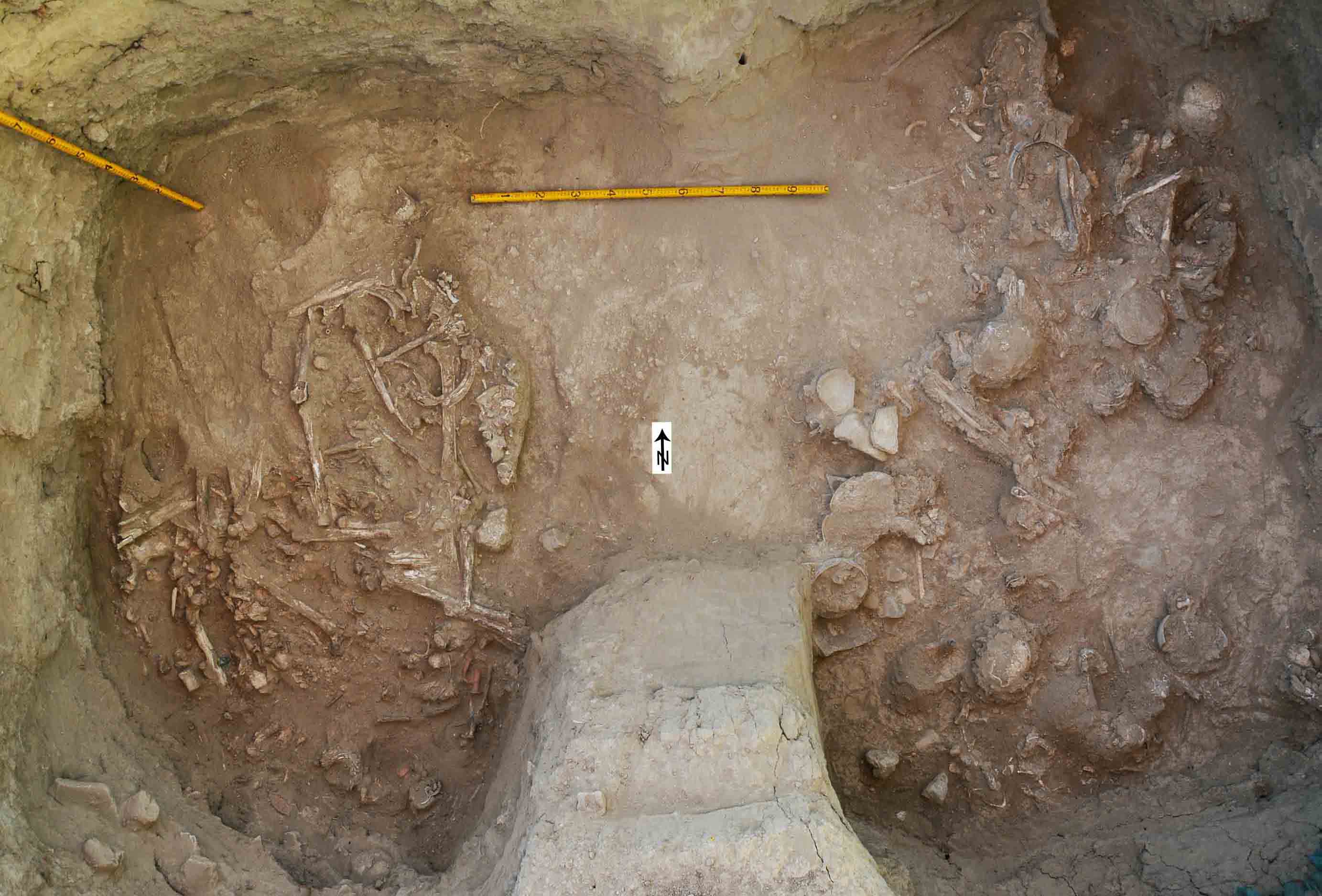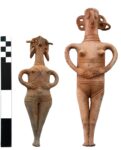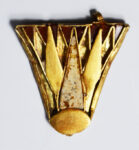Archaeologists have unearthed a Late Bronze Age double-chamber tomb containing an unprecedented wealth of imported grave goods at the Late Cypriote city of Hala Sultan Tekke site near Larnaca, Cyprus. The tombs date to between 1400 and 1300 B.C. No other archaeological site on Cyprus has ever come close to such a profusion of luxury goods from all over the Mediterranean world.

The site of the Late Bronze Age town of Dromolaxia Vizatzia has been excavated for decades, revealing the presence of a major town with a thriving industry in pottery production and textile manufacture. Massive amounts of murex shells point to it having been a production center for the prized indigo blue dye later known as Tyrian purple (Tyre didn’t start producing it until around 1200 B.C.).
University of Gothenburg archaeologists discovered the tombs in 2018. The tomb is shaped like a figure eight and the first season’s dig unearthed 13 skeletons from the two chambers. Grave goods included vessels produced locally as well as jars, alabaster, small jugs and a feeding bottle in Late Helladic and Minoan styles imported from the Aegean. The most spectacular among them was a large Mycenaean krater painted with two chariots drawn by four horses and 10 men with swords. Faience and alabaster vessels were imported from Egypt, as were a pair of pierced ivory discs that were part of the deceased’s garment.
The find required painstakingly careful excavation because of how fragile the bones were from more than 3,000 years spent in the salty soil around Larnaca Salt Lake. In the four years since the double-chamber tomb was discovered, archaeologists have unearthed the skeletal remains of another 142 people, for a total of 155 individuals, some of which were burned. The bones and grave goods were layered over each other, evidence that the tombs were in use for generations.

Hundreds more rare artifacts have also been found, including a bronze knife with an ivory handle, silver and bronze jewelry, Nuragic tableware imported from Sardinia and a large Minoan hollow bull figurine that is the first of its kind ever discovered in Cyprus. At least three large female figurines with bird faces have been found. They all have two piercings in each ear. One wears three ceramic and one bronze hoop earrings through them, one has three ceramic hoops in hers and the third and largest has only one earring remaining in situ.
Another outstanding find is a hematite cylinder seal from the Old Babylonian empire. It dates to the 18th century B.C., which means it was already an antique, at least 300 years old, when it was buried. The seal depicts a deity, people and animals and has a three-line Akkadian inscription mentioning three names: the Mesopotamian deity Amurru, and two kings, father and son. That seal traveled more than 600 miles to wind up in a grave in Cyprus three centuries later.
Egypt was represented by gold jewelry — a diadem, a bead necklace, a lotus-shaped pendant with stone and faience inlay — and a scarab engraved with hieroglyphs that dates to the reign of Akhenaten and Nefertiti. Also by the remains of a Nile Valley fish found among other animal bones. Gemstones found in the tomb were world travelers too, including carnelian from India, lapis lazuli from Afghanistan and Baltic amber.

“The finds indicate that these are family tombs for the ruling elite in the city. For example, we found the skeleton of a five-year-old with a gold necklace, gold earrings and a gold tiara. This was probably a child of a powerful and wealthy family,” says Professor Peter Fischer, the leader of the excavations.
The finds include jewellery and other objects made of gold, silver, bronze, ivory and gemstones and richly decorated vessels from many cultures.
“We also found a ceramic bull. The body of this hollow bull has two openings: one on the back to fill it with a liquid, likely wine, and one at the nose to drink from. Apparently, they had feasts in the chamber to honour their dead.”

The exceptional geographic range and quality of the grave goods found in the double-tomb attest to the pivotal role Dromolaxia Vizatzia played in Late Bronze Age Mediterranean trade networks.
The skeletal remains will now be studied and DNA extracted for analysis.
“This will reveal how the different individuals are related with each other and if there are immigrants from other cultures, which isn’t unlikely considering the vast trade networks,” says Peter Fischer.





